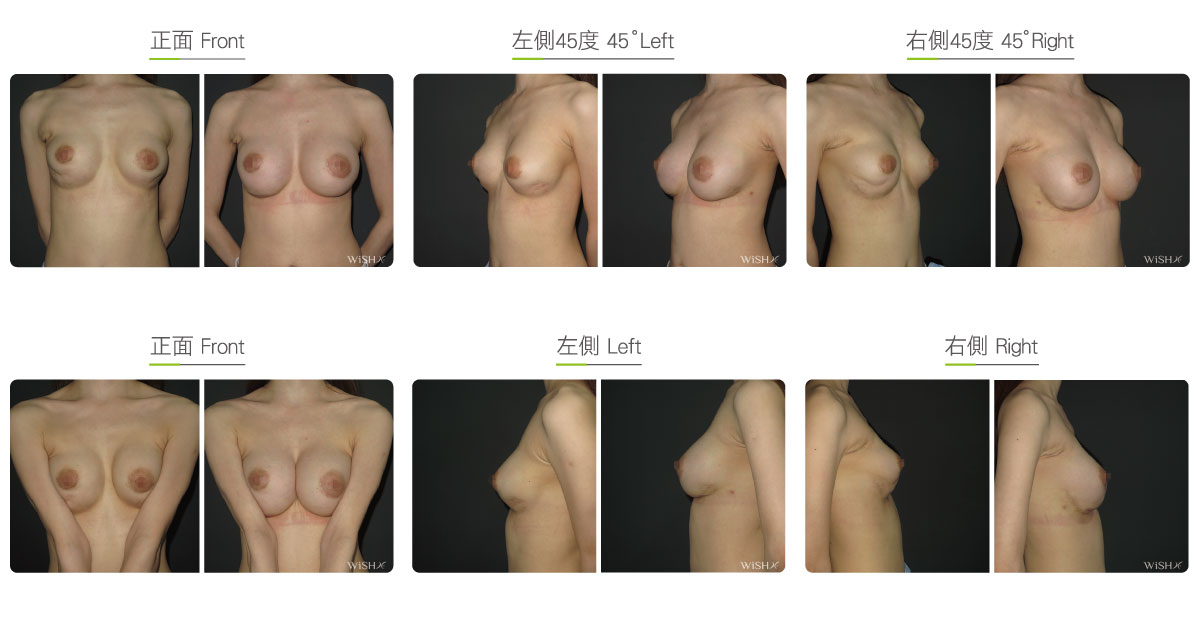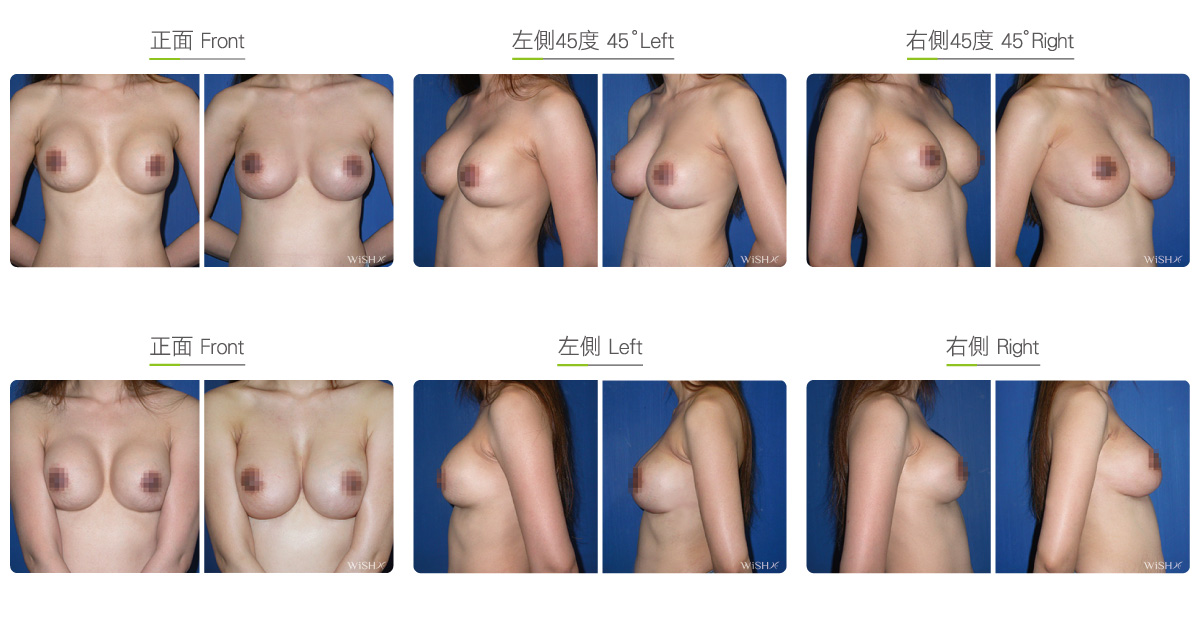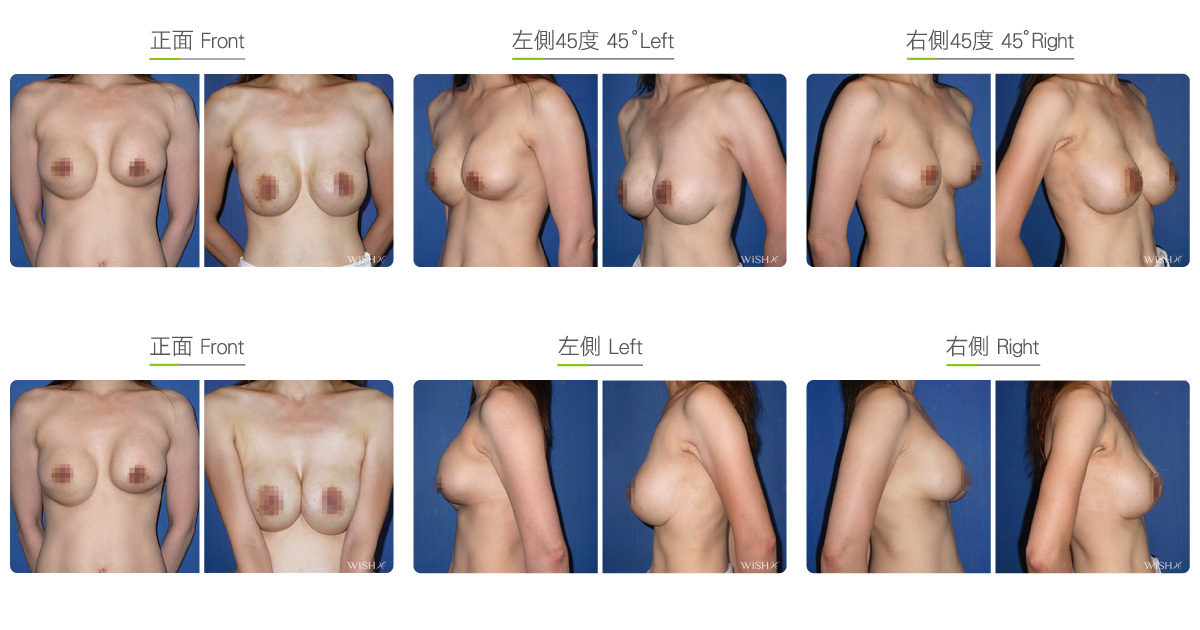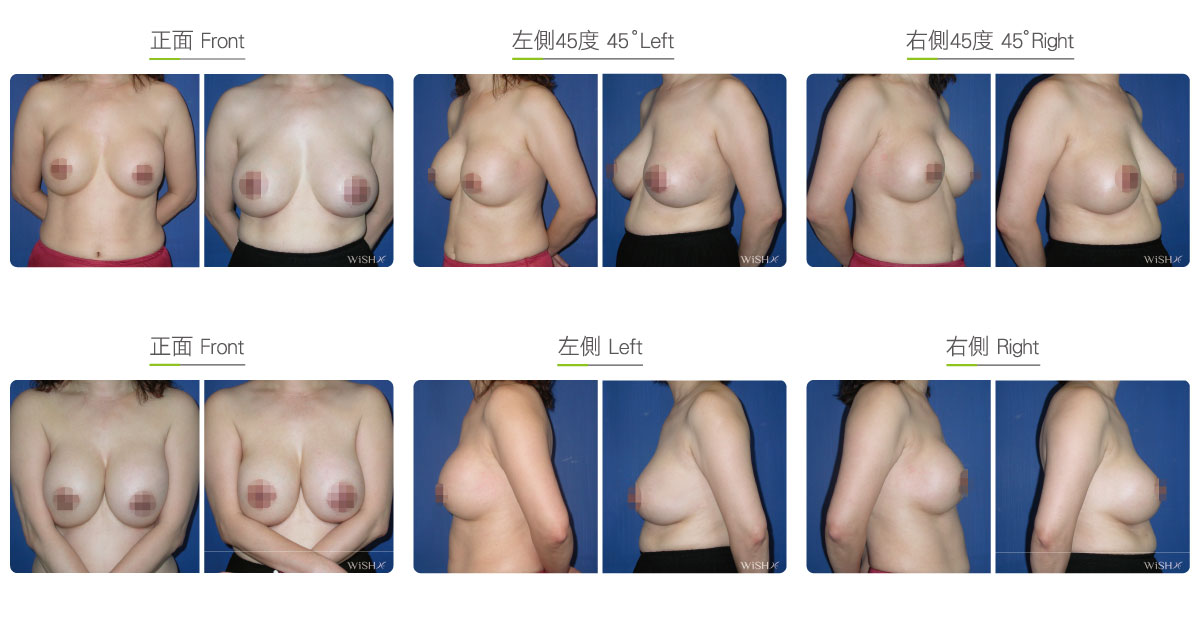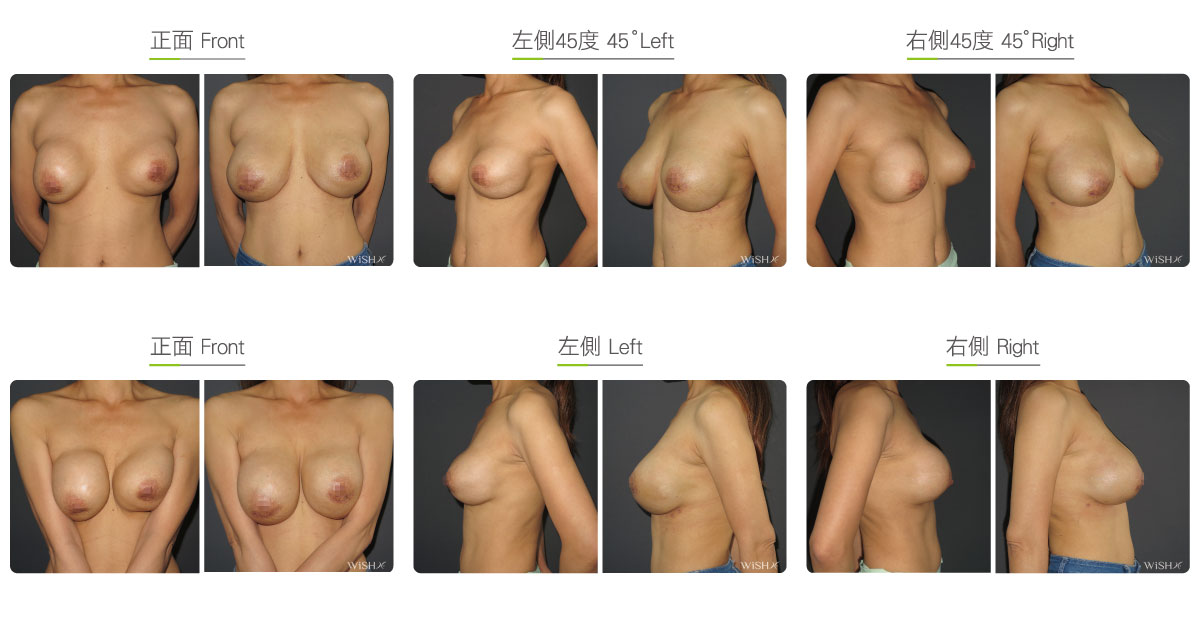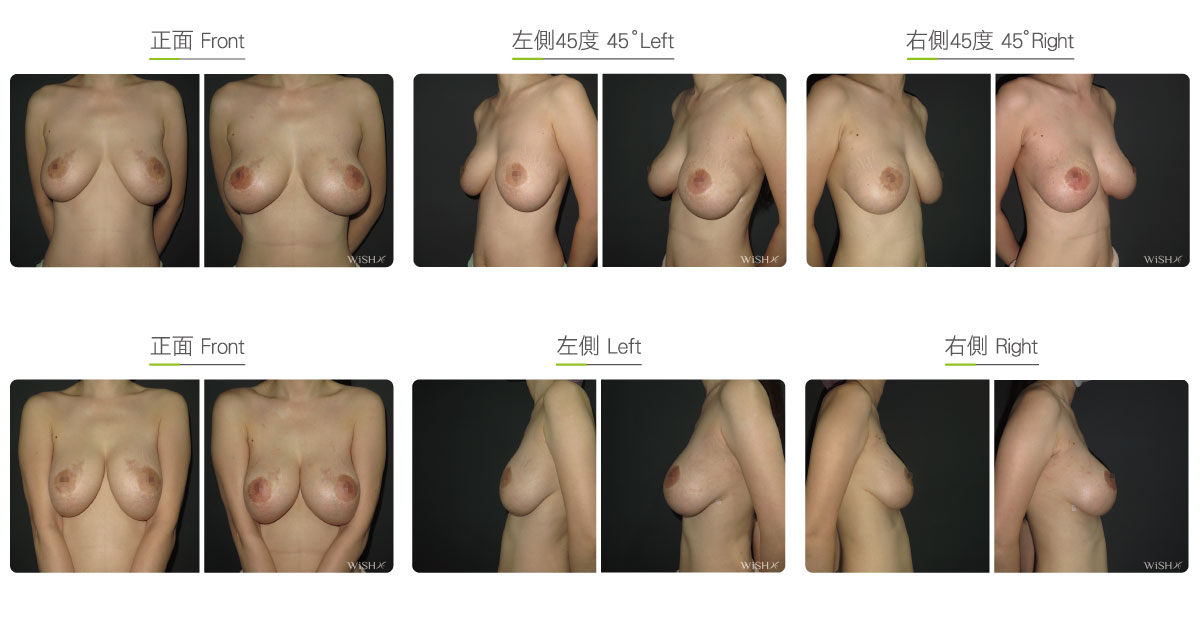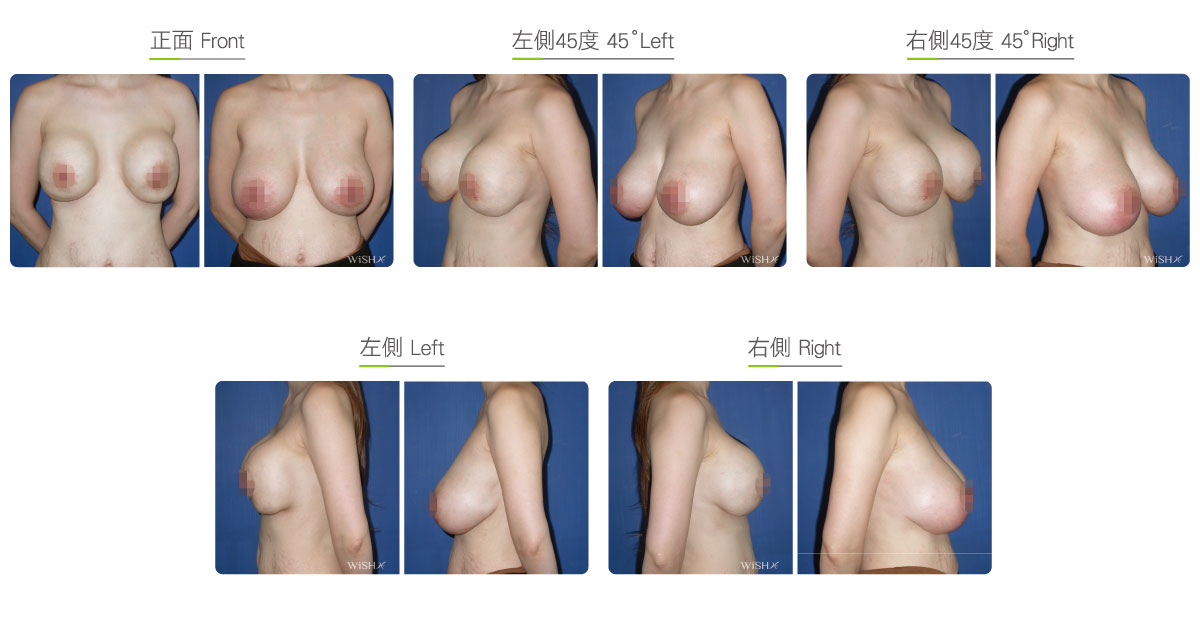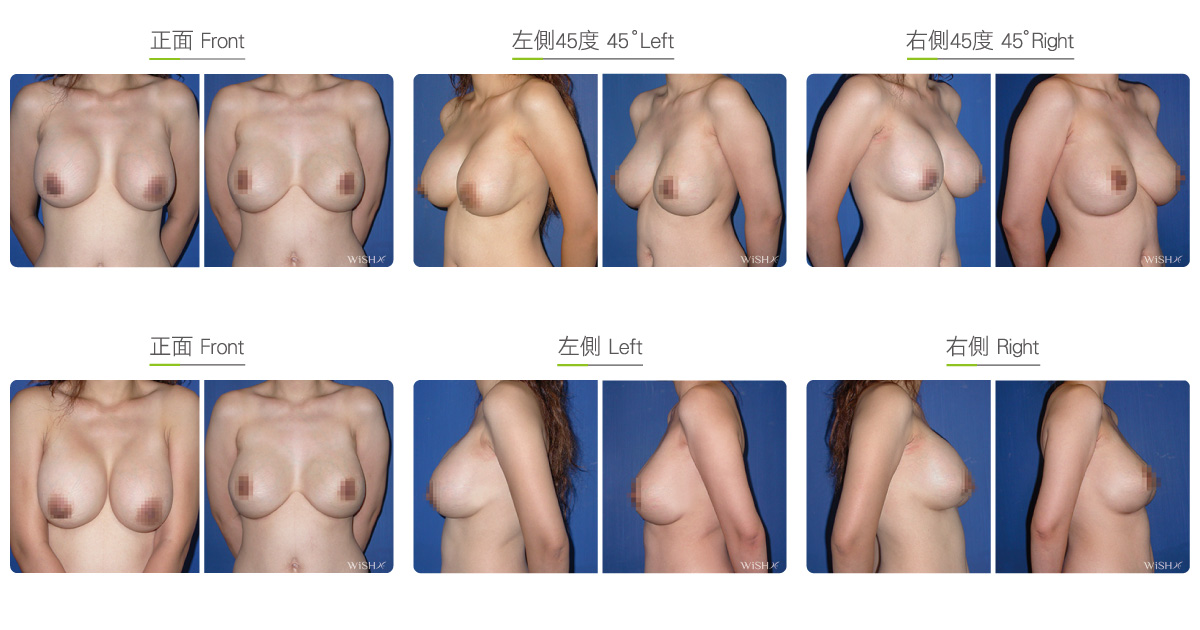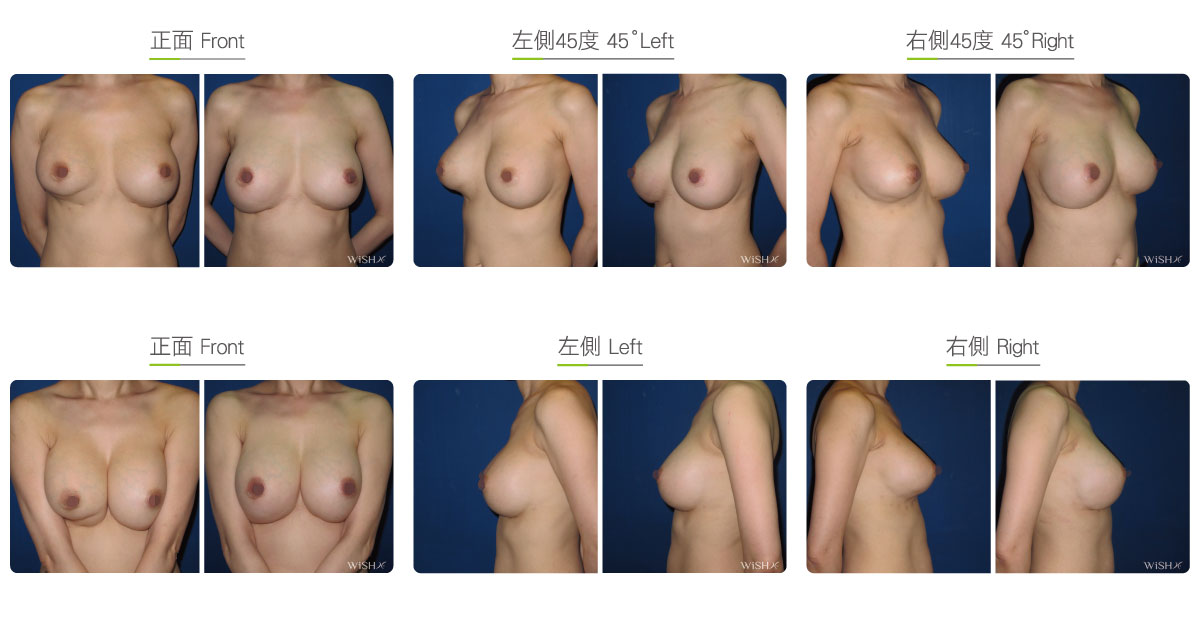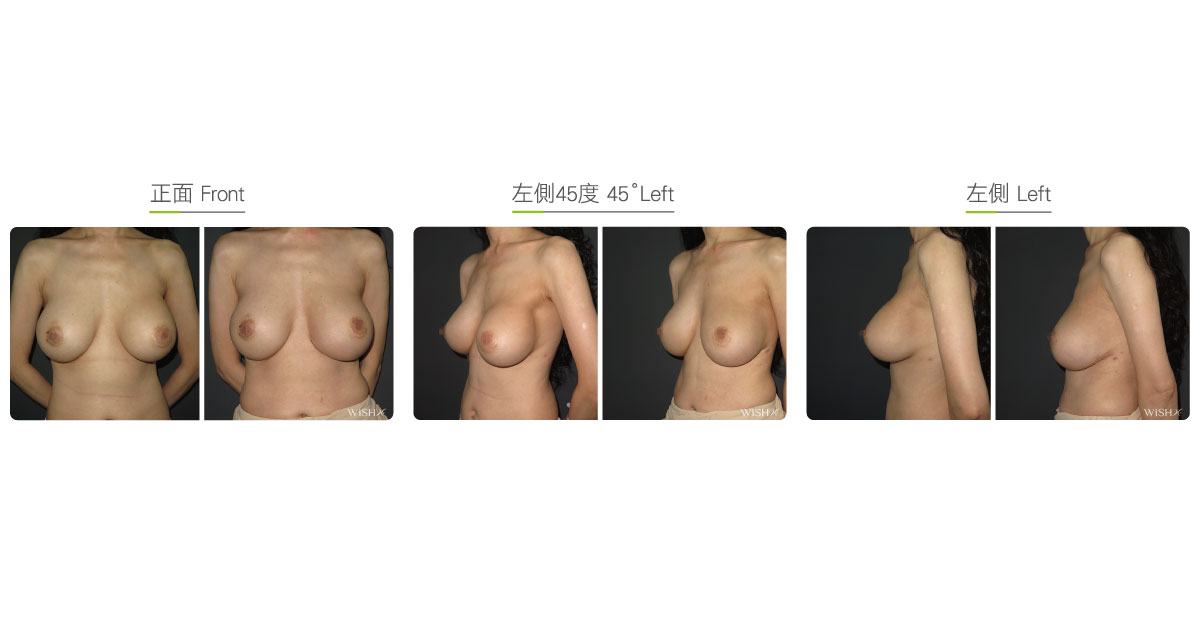Textured Implants Replacement
Textured implants, also known as rough-surface implants, are available in round and teardrop shapes. Both have a silicone gel filling and can be used in various types of breast augmentation surgeries. Prone to create a ball-like appearance and firm or hard touch, such implants are not the preferred choice for primary breast augmentation. However, for some patients with refractory capsules or those who have failed several surgeries for unknown reasons, the final solution apart from implant removal would be changing from smooth implants to textured implants that do not require postoperative massage. Textured implants allow faster breast shaping and more stable results. They are surfaced with fine particles that are more compatible with the human body and can reduce inflammation or the rejection of foreign objects, which in turn reduces the severity of capsular contracture. In particular, the recently introduced generation of teardrop-textured implants has an even more similar appearance to human breasts and improves the problem of a ball-like appearance from previous round-textured models. The cone shape also aids in reducing the strength of capsular contracture in the body. Textured implants effectively increase the success rate of revision surgery for those with refractory contracture and are also the preferred option for patients undergoing multiple revision surgeries due to recurrent capsular contracture.
This surgery is similar to other common surgeries involving capsules. Dr. Chuang will perform capsulotomy or capsulectomy depending on the severity of contracture, dissect a proper pocket, and place new textured implants. This procedure has advantages such as no requirement of postoperative massage, reduction in the uncertainty of inadequate care or recurrent capsules, fast breast shape formation, and reduction in the risk of deformities associated with traditional smooth implants. However, these implants have a firmer and rounder touch than smooth implants. Patients need to have adequate skin conditions to achieve both a natural touch and appearance. Although these implants can definitely reduce the chance of recurrent capsules, there is no absolute guarantee. Patients need to frequently observe changes in the breast after the surgery to ensure the result.
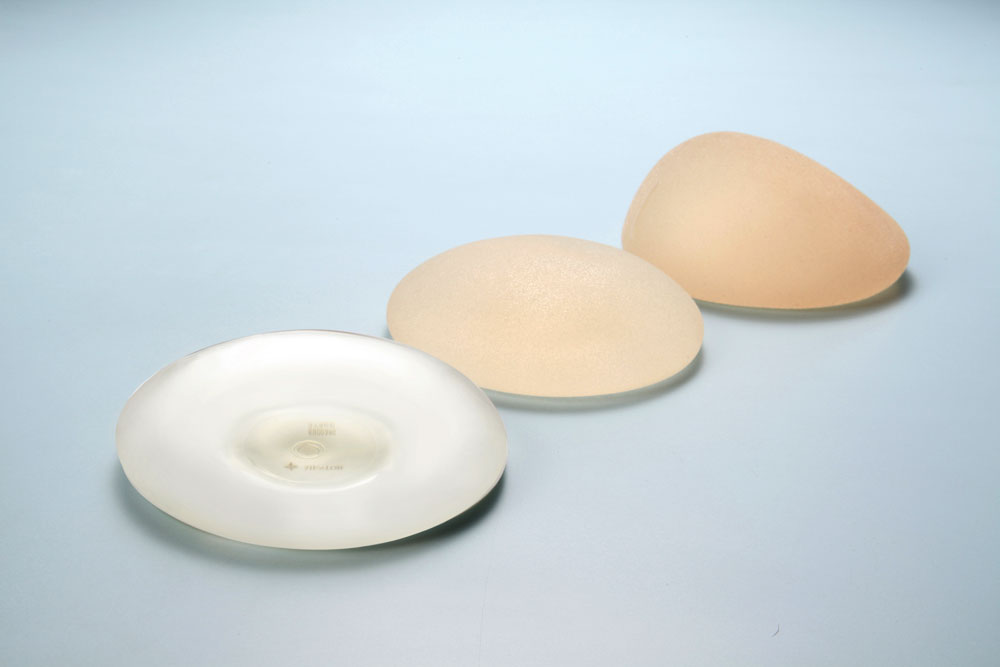
Those patients getting a revision breast augmentation should thoroughly understand the advantages and disadvantages of different types of implants and discuss with the surgeon for the best option.
Surgical conditions
Duration
- Type of anesthesia: General anesthesia
- Type of incision: Previous incision or transaxillary, periareolar, or inframammary incision
- Recovery: Within 3–5 days
- Removal of stitches: 7–10 days
General instructions
No food and water on the day of surgery
- No massage or only mild massage should be performed for 3 months postoperatively.
- Tasks and exercises that require excessive arm strength should be avoided for 1 month postoperatively.
- Sleeping facedown for 3 months postoperatively can increase implant softness.
- A chest strap or special shaping bra needs to be worn to fix the breast shape.
Ideal candidates
- Those who have undergone repeated revision augmentation surgeries or with refractory capsules
- Those who are suspected to reject smooth implants
- Those with original breast size larger than B cup and suffering from severe capsular contracture
- Those who show capsular contracture due to inadequate postoperative massage care
- Those who are undergoing revision surgery but cannot accommodate long-term postoperative massage care
- Those with breast deformity due to mammary gland inflammation caused by massages
Possible complications
- Poor breast texture
- Overly round shape
- Chronic seroma
- Presence of implant edges and ripples
- Scar adhesion
- Implant leakage or rupture
Surgical advantages
-
No postoperative massages required; shortened and simplified care.
-
Textured implants are resistant to capsular contracture, allowing a more stable breast shape.
-
Faster formation of breast shape avoids problems associated with smooth implants such as possible displacement or deformation.
-
Anatomic design of teardrop implants could increase the success rate of revision surgeries.
Surgical drawbacks
-
Firmer breasts; the softness is not comparable to that of smooth implants.
-
The breasts could appear unnatural (too round).
-
Possibility of capsular contracture (grade 2-3) still exists.
-
Not ideal for those who are thin.
Possible procedures in conjunction
Comparison between Textured and Smooth Breast Implants
| Textured Implants | Smooth Implants | |
|---|---|---|
| Implant style | Round or teardrop | Round |
| Inner filling | Silicone gel | Saline solution or silicone gel |
| Method of operation | Endoscope-assisted procedure | Endoscope-assisted procedure |
| Placement of implant | Subfascial or subpectoral | Subfascial or subpectoral |
| Postoperative pain | None | For approximately 2–3 days |
| Texture | Harder | Softer |
| Naturalness | Rounder | Similar to real breasts |
| Postoperative massage | None | 3–6 months |
| Chance of capsular contracture | Low (approximately 5%) | Possible capsular contracture with no massage (approximately 15%–20%) |
| Incidence of implant leakage | Low | Low |
| Breastfeeding | Possible | Possible |


